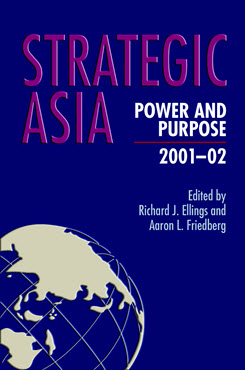Korea (Strategic Asia 2001-02)
In international relations, location matters greatly, and Korea occupies the precise geographic space where the spheres of interest of the four great powers of the Pacific—China, Japan, Russia, and the United States—collide. The shifting fortunes of those powers, and the changing character of their polities, has made for recurring wars in Korea between varying permutations of foreign combatants.
Just as Belgium was the “cockpit of Europe,” so the Korean Peninsula may be considered the contemporary “cockpit of East Asia.” Both countries, after all, share a history of serving once and again as the battlefield for the great powers that surround them. In international relations, location matters greatly, and Korea occupies the precise geographic space where the spheres of interest of the four great powers of the Pacific—China, Japan, Russia, and the United States—collide. The shifting fortunes of those powers, and the changing character of their polities, has made for recurring wars in Korea between varying permutations of foreign combatants.
In the late nineteenth century, Japan fought China for control of Korea, then a decade later battled Russia to secure its ascendancy over the peninsula. Within living memory, all four powers were embroiled in the terrible Korean War of 1950–53, the conflict historian William Stueck has termed “the substitute for World War III.” In that bitter and devastating contest, troops from China and the United States engaged in prolonged mortal combat; the Soviet Union provided materiel and covert military assistance for the communist side, while Japan provided rear bases and logistical support for the U.S.-led UN Command.
Strategic Asia
The Strategic Asia annual edited volume incorporates assessments of economic, political, and military trends and focuses on the strategies that drive policy in the region. Learn more about Strategic Asia.


